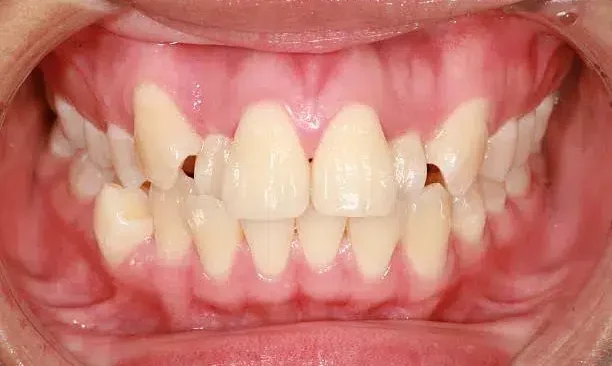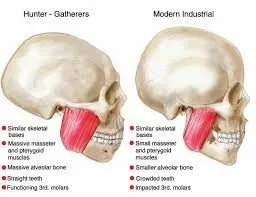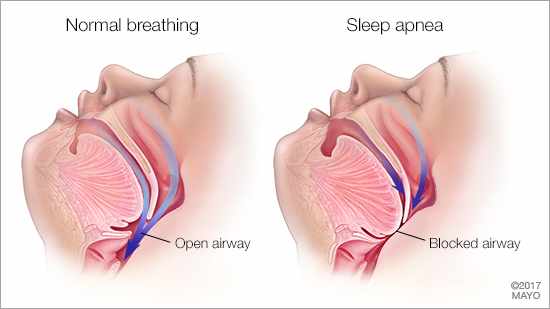How Orthodontics Realigns the Face and Teeth
Stephen Deal • Dec 12, 2018

Introduction to Oral Medicine Education
Dr. Deal plans to educate readers about oral medicine through this blog series. Some posts will continue previous topics; others will stand alone. The goal is to expand views of dentistry beyond just teeth. People should realize how Orthodontics Realigns not only teeth but also improves overall head and neck health.
Why Crooked Teeth Concern Everyone
Crooked or misaligned teeth interest almost everyone these days. Many seek orthodontics to straighten teeth as quickly as possible. Because this topic is important, several follow-up blogs will explore it. This post focuses on why teeth become crooked or unpleasant initially.
Traditional Orthodontics Focus on Straight Teeth Only
Orthodontics mainly aims to make teeth straight at treatment end. They rarely consider why teeth became crooked in the first place. Success measures only include whether teeth look aligned after treatment. This approach resembles fixing ceiling drywall but ignoring the leaking roof. The leak returns when the source remains unaddressed, causing repeated damage. Similarly, teeth often shift back when original problems remain undiagnosed. The teeth may be less crooked but not perfectly straight later. So, why do crooked teeth return despite treatment efforts?
Evolution and Environment Cause Crooked Teeth
Teeth don’t randomly become crooked; evolution and environment shape them. Crooked teeth (malocclusions) did not exist for all human history. Ancient humans had stronger jaws that grew more forward (anteriorly). Their larger jaws allowed more room for all teeth, including wisdom teeth. They also had flatter, worn-down teeth compared to modern humans. Lifestyle changes explain these differences from past to present societies. Modern diets are softer and full of sugar, causing cavities and jaw shrinkage. Chewing hard foods in the past strengthened jaws through muscle pull. Today, weaker jaw muscles lead to smaller, underdeveloped jaws. Another factor is how we nurse newborns compared to ancient times.
Breastfeeding’s Role in Jaw Development
Ancient humans breastfed children longer than modern societies do. Humans wean offspring before the first baby molar erupts in the mouth. We are the only mammals with such early weaning practices. Breastfeeding helps develop infants’ upper and lower jaws properly. It also prepares children for correct nasal breathing and swallowing.(Stay tuned for more breastfeeding info in future posts.)
Why Jaw Size Matters for Crooked Teeth
You may ask, “Why care about ancient skulls and jaws?” Modern jaw changes explain how teeth become crooked today. Teeth size has remained mostly the same over centuries. However, smaller jaws create less room, making teeth prone to misalignment. Not everyone develops crooked teeth, but smaller jaws increase chances. That’s why Orthodontics Realigns teeth to correct these issues and improve oral function.
Why Smaller Jaws Cause More Than Crowded Teeth
Smaller jaws reduce space for teeth, causing crowding and bad bites. However, this is less concerning. The biggest issue involves how smaller jaws affect the airway — the pharynx, larynx, and trachea.
The Body’s Priority: Breathing
The body’s top priority always remains taking in oxygen. It sacrifices other functions to keep breathing.
How Jaw Development Affects the Airway
Over 2,000 years, human jaws have evolved to be smaller and set back. This limits airway space. Smaller jaws push the tongue backward, further restricting airflow. The upper jaw, or maxilla, is the most important for airway space.
The Role of the Maxilla and Nasal Complex
The maxilla holds the nasal complex, which helps purify the air we breathe. Humans breathe primarily through the nose. Nasal breathing cleans and prepares air better than mouth breathing.
Consequences of an Underdeveloped Maxilla
If the maxilla doesn’t grow forward properly, the nasal complex remains small. This reduces airflow through the nose and throat. Reduced nasal airflow forces the body to find alternative breathing methods.
Mouth Breathing and Its Effects
When nasal breathing is limited, the body adapts by breathing through the mouth. Mouth breathing changes tongue position, jaw shape, and lip posture. These changes contribute directly to crooked teeth.
Airway Health Shapes Facial Form and Teeth Position
Airway and breathing mode heavily influence facial structure and teeth alignment. Proper diagnosis early in orthodontics must include airway evaluation. Ignoring airway issues risks crooked teeth returning after treatment.
Past Orthodontic Practices and Modern Understanding
Previously, orthodontists focused mainly on straightening teeth without jaw or breathing evaluation. Now, experts realize that diagnosis must include airway and jaw growth problems. Studies estimate 80-85% of people have a small upper jaw. This high rate demands more attention in treatment planning.
Beyond Teeth: Other Effects of a Small Airway
Small airways cause more than crooked teeth and jaw problems. Conditions like sleep apnea, TMJ pain, and migraines often relate to airway issues. Recognizing these problems proves the importance of airway-focused treatment.
What’s Next: Treatment for Jaw Growth and Airway Improvement
Future blogs will explore treatments to encourage proper jaw growth and airway expansion. This blog honors past orthodontic achievements while promoting comprehensive care. Orthodontics realigns teeth and jaws, offering benefits beyond just straightening teeth.







